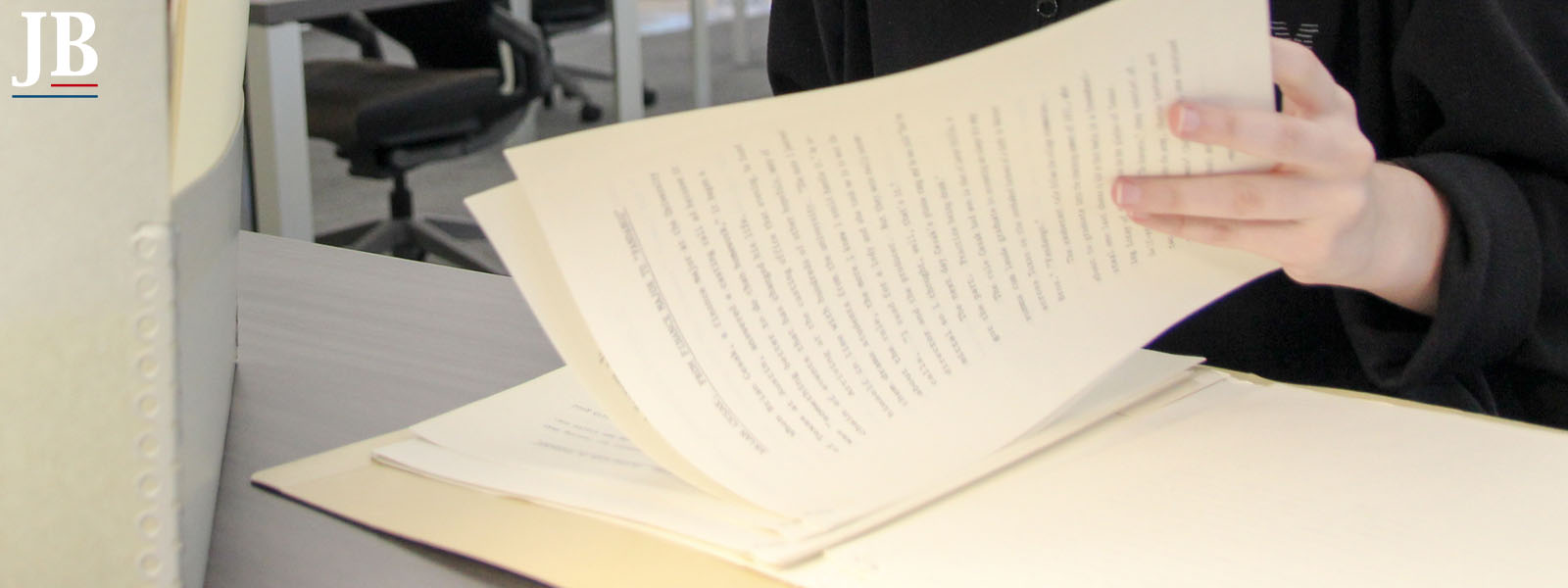On this page, you’ll find resources to assist you in using Brooks Project materials for instructional purposes. The Society for American Archivists has developed Guidelines for Primary Source Literacy, which are linked to here and explain the analysis of primary source materials. Active learning exercises follow the SAA guidelines and can be used for in-person or virtual instruction with primary source materials. We have also included a guide to searching by subject term, theme, or collection strength to find items that may be of interest.
Guidelines for Primary Source Literacy:
https://www2.archivists.org/sites/all/files/GuidelinesForPrimarySourceLiteracy-June2018.pdf
Active Learning Exercises:
- Think, Pair, Share exercise: students examine a primary source. They write down a brief description of the size, look, materials, media, etc. of the source. Then they note a small detail in the source that they need to look closely to observe. Finally, they write down a connection between that primary source and the broader questions they’ve been engaging in during class throughout the semester. They then teach their primary source to a partner. Volunteers present their primary source to the whole group. Having done this, they choose one question to answer and incorporate into a discussion as a class:
- Why do you think these primary sources are in the archive?
- If you had to choose only one primary source to remain in this collection, which would it be? Why?
- What is missing from this selection of primary sources? What other primary sources should we look for in the future?
- Interpretation exercise: Students divide and engage with an item alone or with a partner, they write their interpretations on a sheet of paper they leave with the item; after ten or fifteen minutes the students shift over to look at another item, but instead of seeing the item itself, they examine their colleagues’ interpretation. At the end of the exercise, reconvene as a group to talk about the differences/similarities between the item and the interpretation. This is a way to examine how differing interpretations affect the historical record.
- Presentation Exercise: Students pair up to examine an individual item (this is best when the item is substantial like a notebook, magazine, or manuscript). After fifteen to twenty minutes, the students present their item and interpretation to the rest of the class. When the presentations are complete, talk as a group about the items as a whole. What do they reflect about the topic? How do they relate to other issues the students have encountered during the semester?
- Document/Item Analysis: The class, as a group, examines one item and analyzes it in detail. What do you see? What do you think, based on what you see? Does this document contain facts or opinion? What is the author’s point of view?
Other resources for instruction with archival materials:
- Teaching with Primary Sources (TPS) Collective: https://tpscollective.org
- Teaching with Primary Sources Partner Program LOC: https://www.loc.gov/programs/teachers/about-this-program/teaching-with-primary-sources-partner-program/
Brooks Project materials
This project is searchable by many different metadata terms. When looking for a broader swath of materials, it is simpler to search by subject term, collection strength, or theme, which will bring back results from many relevant items. For example, there are many materials in this collection pertaining to the civil rights movement and attendant pieces of legislation. To find this material, enter these subject terms: "Civil Rights" or "African Americans--Civil Rights." If you would like to find material related to Jack Brooks’s time on the Committee on Government Operations, search for "Government Operations" or "United States Congress. House. Committee on Government Operations."
Banner image: Student researching in the Briscoe Center reading room.

